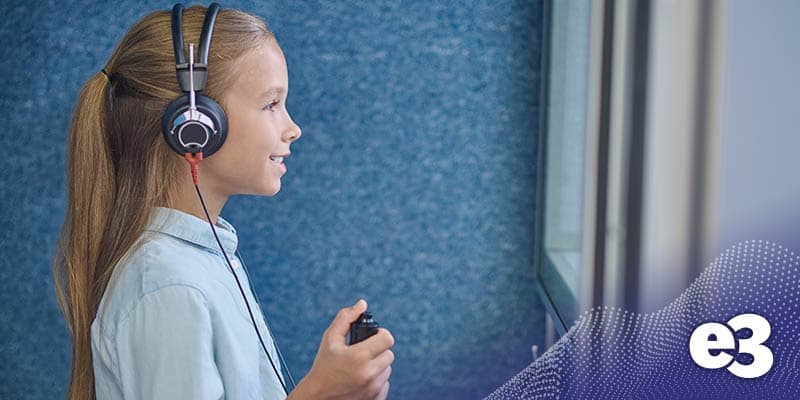5 Essential Sound Booth Questions Answered

Sound booths are vital in conducting accurate hearing tests, evaluating hearing aids, and performing various audiological research studies. Hearing professionals require dependable hearing test booths for accurate testing.
Here are five essential questions about audiometric booths answered by Kyle Latt, a sound booth expert from e3 Diagnostics.
Why test the noise level in a hearing test booth?
It is crucial that your audio booth does not exceed maximum ambient noise levels allowed for audiology testing. This helps reduce distractions and prevent false positive results. Proof that your hearing test booth meets these requirements is also imperative for hearing test results in medical legal cases.
Your e3 technician can check if your audiology booth meets ANSI requirements by measuring noise levels with a sound meter. A sound level meter is a small device that measures changes in air pressure caused by sound waves. Our e3 technicians use high-quality devices to ensure your audiometric booth meets international accuracy and precision standards. They also ensure that it meets ANSI requirements.
When should someone test the noise level in an audio booth?
There are five critical times to measure ambient noise levels within a sound booth.
After the sound booth’s initial installation, when all audiological equipment is in place.
When the ambient noise level of the exterior space changes.
After relocation of the hearing test booth.
After running new equipment cables through the audio booth’s jack panel. Adding acoustic sealant around cables is essential to decrease sound transfer between sides.
Occupational Safety and Health Administration (OSHA) requires an ambient noise level evaluation at least annually for a stationary sound booth.
Why do audiometric booths exceed noise level limits?
There are several reasons why your sound booth may not meet ANSI requirements for permissible ambient noise levels. The most common are:
The sound booth is not suitable for the environment
Not all sound booths are equal. Even if the sound booth looks good, it might not block enough noise for your clinical area. Our technicians or sales managers will visit the site or gather information to recommend and install a hearing test booth accurately. Also, if the ambient noise in the environment changes, our e3 professionals can offer solutions.
It is important to note that solutions to ambient noise are only sometimes related to the sound booth itself. An example of this comes from e3 Diagnostic’s sound booth expert, Kyle Latt.
“I’ve dealt with the hospital recently, and they bought a new compressor for their earmolds. The compressor made enough vibrational noise to transfer across and underneath the wall into the sound room.”
The solution? “To buy a sound dampening pad to put the compressor on. So, we didn’t adjust the booth. We just fixed the problem.”
Sound leakage
Another common reason your audiometric booth’s ambient noise level exceeds ANSI requirements is sound leakage.
Leaks frequently occur near the sound booth door due to wear and tear. Leaks can also occur when running new cables through the booth’s jack panel without adding acoustic sealant.
Identifying these problems can take place through in-person inspection, visual inspection or with the help of photos. Our e3 professionals can suggest fixes to help resolve the problem once they identify the source of the issue.
What about used sound booths?
When considering buying a used audio booth, it’s important to work with professionals like our e3 technicians or regional sales managers. Our experts will ensure the sound booth is in good condition and meets the current requirements. Some models of sound booths are easy to disassemble and reinstall without issue, while others can sustain considerable damage during disassembly.
How can I maintain my hearing test booth?
Close sound booth doors after hearing testing to decrease wear and tear on hinges.
Wipe down surfaces with alcohol-based solutions. If necessary, use only a damp cloth to clean sound booth walls as too much liquid can harm the perforated surfaces. Learn more about sanitizing your audiometric booth here.
You should arrange a noise test after initial installation or relocation. Additionally, you should schedule a noise test if the noise level in the surroundings changes. Finally, schedule an ambient noise test after running new equipment cables through the booth’s jack panel.
As a hearing professional, you rely on your sound booth to do your job well. Therefore, it is vital to trust that it meets ANSI ambient noise requirements. Unsure? Schedule an ambient noise test today.
Are you interested in purchasing a sound booth? Check out what we have to offer here.
Kyle Latt, Sound Room Sales, Service and Installation Manager, has installed thousands of sound booths in the US and internationally for 15+ years.
**If you haven’t already, make sure to subscribe to our newsletter to keep up-to-date with our latest resources and product information. **
